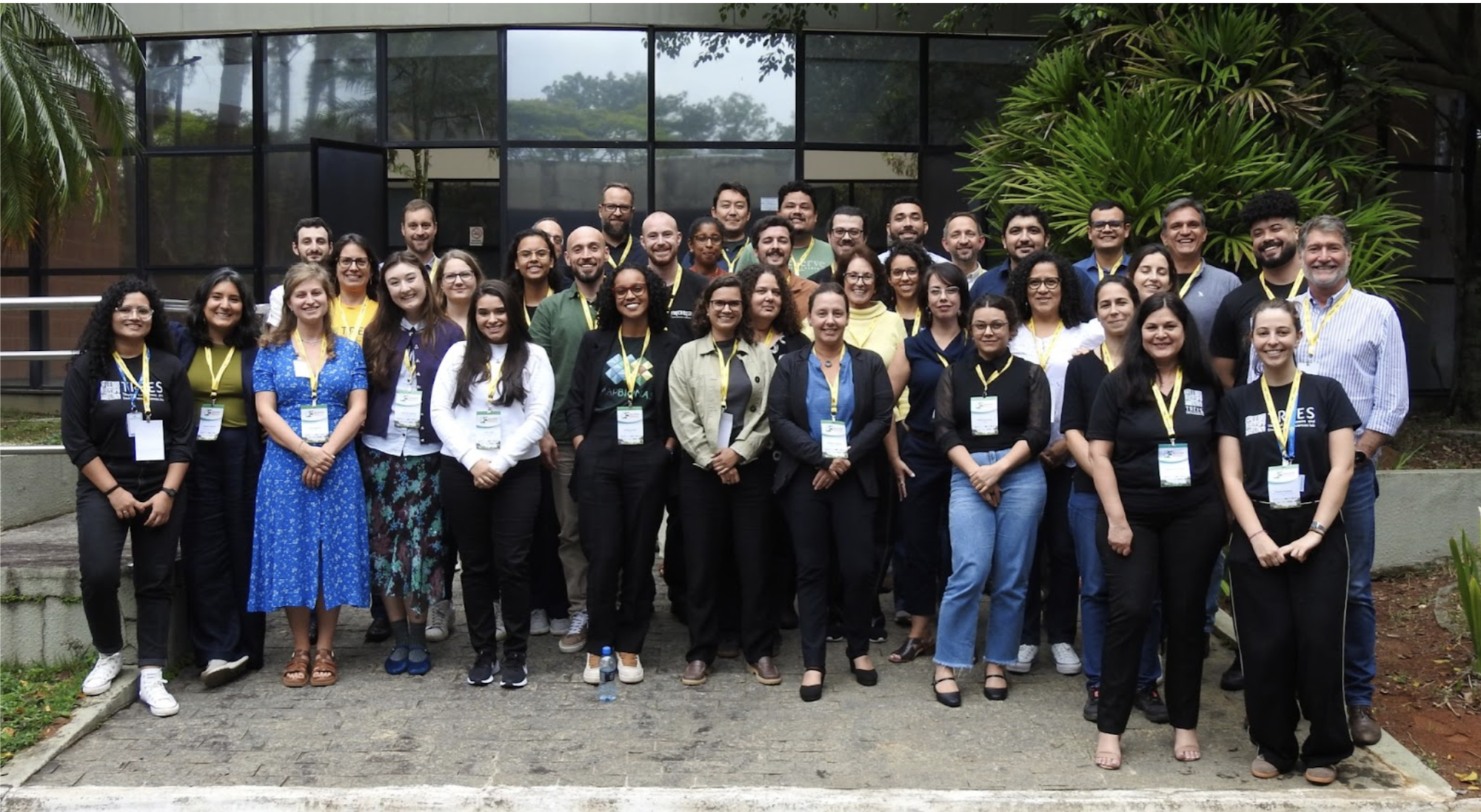Brazil’s Secondary Forests took centre stage last week (29th-31st October) at the Brazilian National Institute for Space Research (INPE) in Sao Jose dos Campos, where a diverse community of world-leading experts gathered for a workshop focussed on “Synthesising post-disturbance carbon emissions and removals across Brazil’s Forest Biomes” - SynCER.
Secondary forests regrow naturally after deforestation and land abandonment and have the potential to rapidly accumulate carbon, increase biodiversity and reduce forest fragmentation, with implications for the climatic stability of the region and beyond. As numerous countries have pledged to protect and increase their area of forested landscapes, understanding the dynamics of these forests is crucial for efficiently implementing policies.
Funded by the European Space Agency, and organised by Helmholtz Centre for Geosciences (GFZ) and the National Institute for Space Research, in Brazil, (INPE), the workshop brought together 58 research scientists, national greenhouse gas inventory experts and the private sector to discuss recent advances made in monitoring these forests and evaluating their recovery success in terms of aboveground carbon accumulation and biodiversity integrity.
Crucial discussions were held on the national and global satellite-based products available for monitoring secondary forest extent in Brazil and, importantly, estimating their age. Field data scientists discussed the unique position of their work to explore important biodiversity and species composition developments and secondary forest recovery. Policy and inventory experts such as from the Food and Agricultural Organisation (FAO), the Global Forest Observations Initiative’s (GFOI) Research & Development Component, and Brazil’s Ministry for Environment provided their insights to scientists to help advance how results from research on secondary forest carbon accumulation can be better integrated into national and jurisdictional carbon credit reporting and National Greenhouse Gas Inventories.
A notable highlight was a keynote talk by Dr Thelma Krug, from INPE and former Vice-Chair of the IPCC, who shared her long-standing expertise of global climate negotiations, and the imperative to reduce fossil fuel emissions, to ensure that impact of climate change on forests is reduced. Alongside this keynote, the participants also heard from Frank Martin Seifert, who leads ESA’s CCI biomass project, and outlined the historical launch of ESA’s BIOMASS mission, the first P-band in space, in April this year.
Following on from this, first results from the BIOMASS data acquired during its commissioning phase were presented, using an integrated approach with national data from Brazil. Key outputs from the workshop included highlighting the progress that has been made on how to best integrate results of carbon accumulation in Brazil, which will be presented at COP30 this week and followed up with a scientific publication.
Dr Viola Heinrich, who led the organisation of the workshop, added that: “the meeting brought together early career scientists, senior scientists and inventory experts to discuss how the knowledge accumulated over the last decades on Brazilian secondary forest can be actively integrated into reporting. Brazil is an excellent example on how science and applications can be brought together, with opportunities to do this elsewhere”.
The summary of the workshop will be made available here: Workshops and Meetings - GFOI R&D Component


